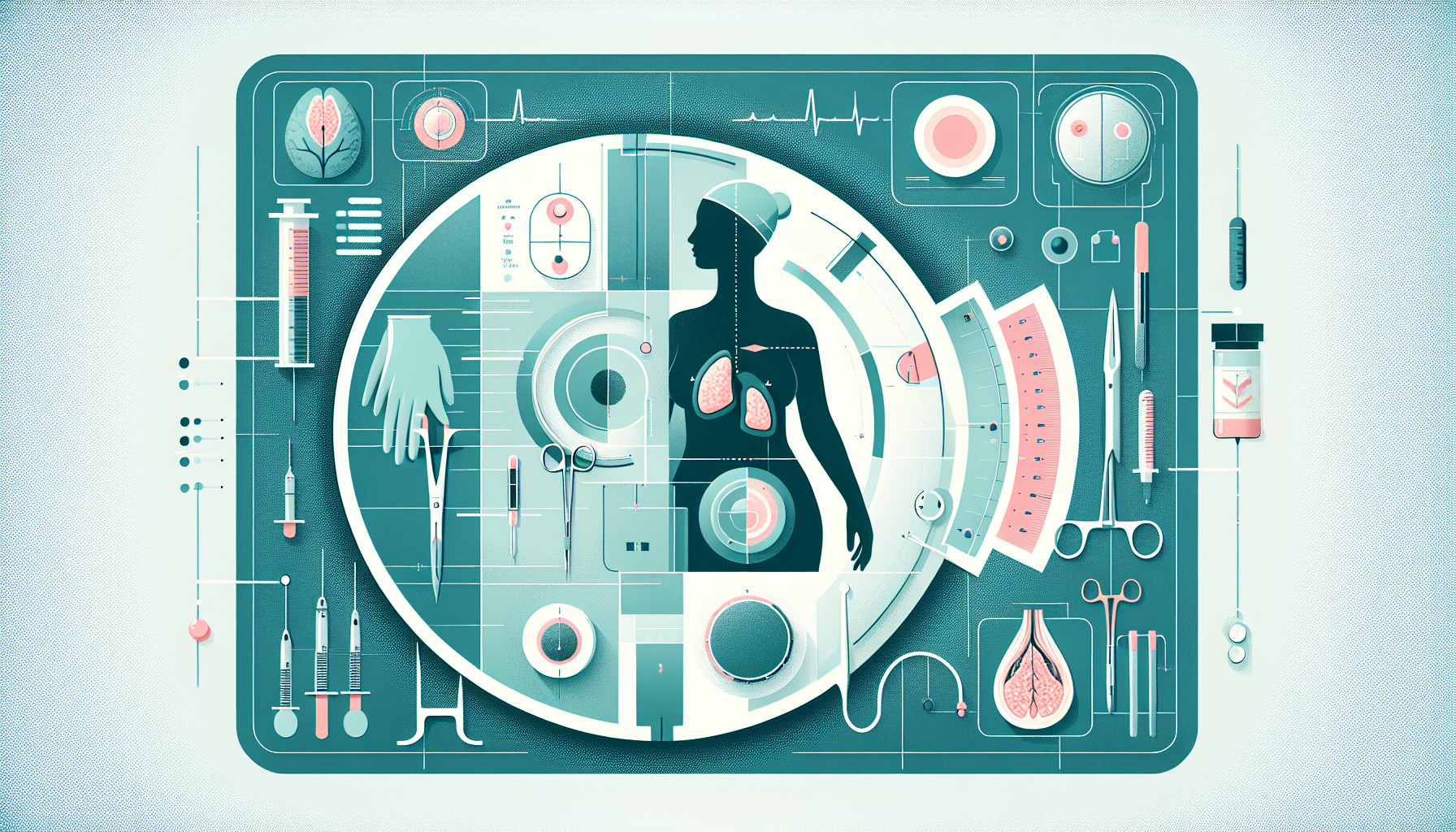Our Summary
Gestational gigantomastia (GGM) is a rare condition where a woman’s breasts grow unusually large during pregnancy. The exact cause is still unknown. Treatment options include medication and surgery. If medication doesn’t work, surgery might be necessary. The surgical treatments currently available are either reducing the size of the breasts or removing them and reconstructing them later.
The research paper reports on a case of a 25-year-old woman who experienced severe breast enlargement after giving birth. As medication didn’t help much, surgery was the first choice for treatment. The doctors removed both her breasts, grafted the nipple and areola (the dark skin around the nipple), and immediately inserted a device to stretch the skin and make room for breast implants. Reconstruction was fully done 8 months after the initial surgery by replacing the stretching device with permanent implants.
Even though GGM is not a cancerous condition, it can become a serious problem. But, it can be successfully treated by removing the breasts, grafting the nipple and areola, and reconstructing the breasts later.
FAQs
- What is Gestational Gigantomastia (GGM) and how is it treated?
- What surgical interventions are available for GGM if medical treatment is unsuccessful?
- What does the surgical intervention process for GGM entail, particularly in relation to nipple-areola complex grafting and tissue expander implantation?
Doctor’s Tip
A helpful tip a doctor might tell a patient about mastectomy is to ensure proper post-operative care and follow-up appointments to monitor healing and address any concerns or complications that may arise. It is also important to follow any recommendations for physical therapy or exercises to help with recovery and to maintain range of motion in the affected area. Additionally, patients should be aware of potential emotional and psychological effects of mastectomy and seek support from healthcare professionals or support groups if needed.
Suitable For
Patients who are typically recommended mastectomy include those with:
- Breast cancer, particularly if the cancer is large or has spread to other parts of the breast
- A strong family history of breast cancer or a genetic predisposition to the disease (e.g. BRCA mutation)
- Ductal carcinoma in situ (DCIS) that is extensive or has a high risk of developing into invasive breast cancer
- Recurrent or persistent breast cancer after previous treatment
- Severe breast pain or discomfort related to large breasts (e.g. gigantomastia)
- A desire for risk reduction or prevention of future breast cancer
In the case of gestational gigantomastia, mastectomy may be recommended if medical therapy is unsuccessful in managing the condition and if the patient desires surgical intervention. Mastectomy with delayed reconstruction and grafting of the nipple-areola complex may be considered as a treatment option for severe cases of gestational gigantomastia.
Timeline
Before mastectomy: The patient may experience symptoms such as rapid and massive enlargement of the breasts, pain, skin changes, and difficulty in performing daily activities. Medical therapy may be attempted to manage the symptoms, but if unsuccessful, surgery may be recommended. In the case of gestational gigantomastia, the patient may undergo bilateral mastectomies with immediate reconstruction.
After mastectomy: Following the surgery, the patient will have a period of recovery and healing. They may experience pain, swelling, and discomfort in the chest area. Depending on the type of reconstruction performed, the patient may have tissue expanders in place for a period of time before final implants are placed. The patient will also have regular follow-up appointments with their healthcare provider to monitor healing and address any concerns. Ultimately, the patient may experience improved quality of life and body image after mastectomy and reconstruction.
What to Ask Your Doctor
- What are the risks and benefits of mastectomy for treating gestational gigantomastia?
- What type of mastectomy procedure would be most appropriate for my individual case?
- How long is the recovery process after a mastectomy for gestational gigantomastia?
- What are the potential complications or side effects of mastectomy surgery?
- Will I need additional surgeries or procedures for breast reconstruction after the mastectomy?
- How will mastectomy affect breastfeeding in the future?
- What are the alternatives to mastectomy for treating gestational gigantomastia?
- How will my breasts look and feel after the mastectomy and reconstruction process?
- What is the long-term outlook for patients who undergo mastectomy for gestational gigantomastia?
- Are there any lifestyle changes or precautions I should take after the mastectomy surgery?
Reference
Authors: Qin F, Si L, Zhang H, Zhang M, Zeng A, Long F, Yu N, Liu Z, Wang X. Journal: J Int Med Res. 2020 Jun;48(6):300060520920463. doi: 10.1177/0300060520920463. PMID: 32529879
